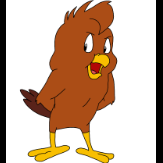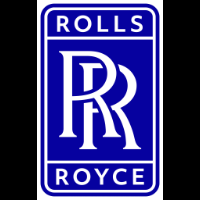
Edgar Brooks
Deceased Members-
Posts
1,259 -
Joined
-
Last visited
-
Days Won
2
Edgar Brooks last won the day on January 3 2014
Edgar Brooks had the most liked content!
About Edgar Brooks
- Birthday 10/08/1940
Contact Methods
-
Website URL
http://
Profile Information
-
Gender
Male
-
Location
High Wycombe, England
-
 Martinnfb reacted to a post in a topic:
Hurricane help!
Martinnfb reacted to a post in a topic:
Hurricane help!
-
 Martinnfb reacted to a post in a topic:
Hurricane help!
Martinnfb reacted to a post in a topic:
Hurricane help!
-
 Martinnfb reacted to a post in a topic:
Trump 24th scale hurricane
Martinnfb reacted to a post in a topic:
Trump 24th scale hurricane
-
 Ayovan reacted to a post in a topic:
1/32 HASEGAWA F-86F kit[s]...?
Ayovan reacted to a post in a topic:
1/32 HASEGAWA F-86F kit[s]...?
-
 cbk57 reacted to a post in a topic:
Jack Charles' Mk.IX in June/July 1944
cbk57 reacted to a post in a topic:
Jack Charles' Mk.IX in June/July 1944
-
 AdamR reacted to a post in a topic:
Tamiya's big Spit
AdamR reacted to a post in a topic:
Tamiya's big Spit
-
 wpierson reacted to a post in a topic:
Supermarine Spitfire Mk.IXc
wpierson reacted to a post in a topic:
Supermarine Spitfire Mk.IXc
-
 Alburymodeler reacted to a post in a topic:
Spitfire Mk 22/24 into a Mk XIVe??
Alburymodeler reacted to a post in a topic:
Spitfire Mk 22/24 into a Mk XIVe??
-
 andromeda673 reacted to a post in a topic:
Confusion with Revell Spitfire II
andromeda673 reacted to a post in a topic:
Confusion with Revell Spitfire II
-
 RBrown reacted to a post in a topic:
Confusion with Revell Spitfire II
RBrown reacted to a post in a topic:
Confusion with Revell Spitfire II
-
It harks back to when Revell produced an instrument panel that was back to front. As it's supposed to represent the landing lamps control,it should be fitted on the panel, above, and slightly to the left of the pilot's left knee.
-
There was no such colour as "high-speed silver"; it was "silver, to a high-speed finish," which is not quite the same thing. It was found that early post-war paints, being basically the same as pre-war paints, would not stick to the surface, so the dope needed a coat of gloss varnish (which matted down with use.) This problem was what caused Camm to have the Hunter prototype painted Sky (plus varnish,) and led to the wraparound scheme on some fighters.
-
No, it's because of the use of the datum line, not the thrust line, which was/is angled up about two degrees. Run that back to the tail, and the rudder post is at right angles. There are one or two other points (can't comment much on the drawings, since they're too indistinct on my computer):- Leaving the irritating "19th. Squadron" (which never existed) I should point out that the central panel line, on the fuselage, is not straight, but has a pronounced downward "kink" just below the radio hatch (both sides, in fact.) No RAF wartime aircraft ever had a glossy finish. "Mixed Grey" as a title, never existed; 11-8-41 the Air Ministry asked RAE Farnborough to provide colour samples, plus a name, for a new colour which could be produced from a 7:1 mix of Sea Grey Medium:black (easily done by removing 1 pint from a gallon of grey and replacing it with black.) 21-8-41 (only 10 days later) the name Ocean Grey was issued.
- 16 replies
-
One would have hoped they'd point out that AR213 is a Mk.I (2nd one built by Westland) and there's a genuine Mk.II P7350 available to view with the Battle of Britain Memorial Flight. The holes in the fuselage are not "sight windows." They are supposed to represent where "station keeping lights" were fitted, presumably for the abortive use of Spitfires as nightfighters. They did not exist before 11-11-40, and were deleted 22-8-41. Beware the suggested positioning of the landing lights operating switch part no 40; it's a hangover from when Revell first produced a back-to-front instrument panel, and should be fitted on the instrument panel above the pilot's left knee. There was no crowbar in the door until (at least) 3-2-41, possibly 23-1-42. If you drop the flaps the interior should be silver, not blue. The lozenge-shaped depression in the backrest is a complete mystery, since it looks nothing like the usual cushioned item.
-
For a time, there were problems with leaking oil seals on the four-blade prop, which necessitated a return to the three-blade. I don't have any dates, but you really need a photo, to be certain.
-
It is, otherwise there would have been no need for the cut-outs, and fill-in pieces, for the cockpit walls.
-
Very impressive, but, unfortunately, nothing like the real thing. Wings, tailplanes and fins were covered with wood, every countersunk screw hole (about 3" apart) was filled with brummer stopping, then sanded smooth, and the surface covered with madapolam, a superior-quality Egyptian Cotton held in place by brushed-on red dope. This was done before the components left the factories (mostly in this town.) The upper wing surfaces were all in one piece, scarf-jointed together, with the outer panels having the grain laid at 45 degrees, for strength. The panels were screwed and glued into place, and everybody (complete with screwdriver) in the factory would pile onto the job, to ensure that the panels were in place, and clamped, before the glue hardened. The only parts which left here with the wood grain still visible were the fuselage halves, and, as soon as they were fitted out and joined together, the completed fuselage was also covered in madapolam. The "wooden" model, done so well by Roy Sutherland, was a nightfighter, which caused its target to explode, and its fabric was mostly burnt off in the ensuing fireball.
-
Rocket armed Mosquitoes- pylon question
Edgar Brooks replied to BloorwestSiR's topic in LSP Discussion
Maybe this will help, even though it's showing double-tiered rockets, and doesn't show the tank guard (essential between the tank and the rockets) too clearly:-- 60 replies
-
QUESTION: the finish of real warplanes in WW2
Edgar Brooks replied to ssculptor's topic in LSP Discussion
In the modelling world, there seems to be a general lack of understanding of the reason for camouflage; it was to stop the airframe betraying its existence to anyone flying overhead. This was the reason for matt paints, and is why satin finishes were not permitted; smooth is not satin, and this was drummed into groundcrew, when this was finally realised. Even propellers went to matt black, to stop reflections. -
QUESTION: the finish of real warplanes in WW2
Edgar Brooks replied to ssculptor's topic in LSP Discussion
Early in the war, the RAF never did wholly go over to type S paints, since the manufacturers found it impossible to grind the pigments (for cellulose) fine enough, without making the final product glossy. Sky was, in fact, glossy, but, being underneath, where it didn't reflect, it didn't matter. It was August 1942, when Supermarine found a synthetic paint (D.T.D.517,) which met all the requirements, being smooth and matt at the same time. Smooth is often mistakenly taken as equalling satin, or eggshell, but it was nothing of the sort. From late 1942, Spitfires, soon to be followed by Typhoons and Beaufighters, began to use the new paint, and a new trade, Aircraft Finisher, was created to ensure the finish remained pristine. Taught by I.C.I., they were told NOT to use a wax polish, since it made recovering damaged paintwork too difficult, necessitating completely stripping off the contaminated paint; one can only imagine the problem for them, when confronted by pilots demanding a waxed finish. As well as using the new paint, Spitfires' wings, back to and including the mainspar line, had all panel lines and rivet "divots" filled and sanded smooth, before being primed and painted, which actually makes all those rivets, lovingly added by manufacturers and modellers alike, completely redundant. Damaged paint was supposed to be retouched, sanded smooth with a wet-and-dry paper (wet,) then washed down with clean water; apart from the likelihood of rain, this probably accounts for some of the "gloss painted" airframes seen in some photos. -
Wrong, Typhoons were silver, Tempests were green (as were late Mark Spitfires.) Aluminium was always a problem, and became quite acute late in the war, so green replaced silver in many areas (even MH434's rear fuselage is green inside.)
-
What's your bet on the next 1/24 th Airfix kit ?
Edgar Brooks replied to Erwin's topic in LSP Discussion
Apparently I can't get the "quote" system to work, but, to the gentleman who suggested that I should tell Hornby they're "nuts," do you really believe that is the way to persuade a company to think again about their policy? I've always found that being rude to someone starts the conversation off on completely the wrong foot. -
What's your bet on the next 1/24 th Airfix kit ?
Edgar Brooks replied to Erwin's topic in LSP Discussion
I realise this will rain on a few parades, but I asked this very question of the head of the Airfix research team, at Telford last year. While he was happy to tell me that they are already working on the next one, he (naturally) wouldn't say what it was, but did say that it wasn't (and wouldn't be) a Spitfire, because it was considered that there weren't enough "extras" that were hung on the airframes, to justify it in the large scale. This tends to head me off in the direction of Sea Fury, Hunter, Buccaneer, etc., but we'll see, -
Only the crew tires on British aircraft, and that's when they're off-colour.
-
Gleed's "LK-A" (which is in some issues of the kit) was over-painted black at the end of 1940; there are a couple of photos of it in Aircam no.24.



